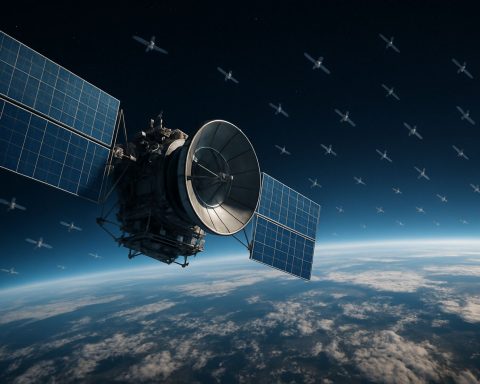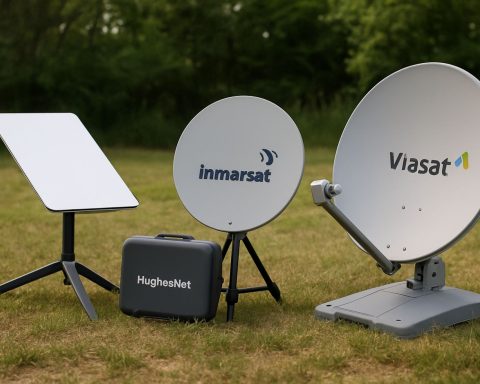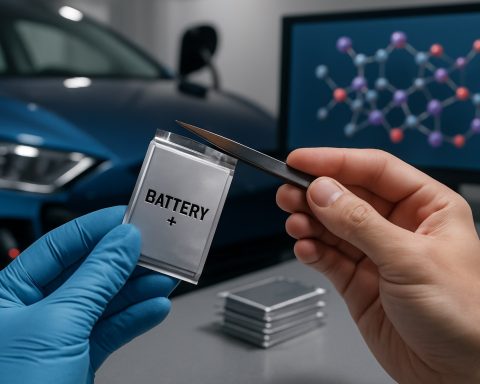- A new lithium-ion battery developed by the University of Michigan enables electric vehicles (EVs) to charge fully in just ten minutes, even in temperatures as low as -10°C.
- This advancement features a 20-nanometer-thick single-ion conducting glassy solid electrolyte coating that ensures smooth lithium ion flow, resembling a thermal blanket.
- The new battery technology integrates seamlessly into existing production lines without requiring changes, unlike other complex solutions using lasers or thick electrodes.
- Employing a hybrid LBCO-HOLE system, these batteries maintain over 92% charge after 100 fast-charge cycles, vastly outperforming standard models.
- This innovation represents a significant step toward sustainable EV technology, combining high performance and efficiency without extensive industry changes.
Imagine a world where electric vehicles (EVs) defy the whims of harsh winters, charging fully in just ten minutes—even when the mercury plummets to -10°C. A groundbreaking development from the innovative minds at the University of Michigan has made this vision a reality. This new lithium-ion battery is set to revolutionize the EV market, promising ultra-fast charging without the need to reinvent current manufacturing processes.
At the heart of this advancement lies a novel approach: a 20-nanometer-thick single-ion conducting glassy solid electrolyte coating. Crafted meticulously using atomic layer deposition, this coating acts like a well-oiled highway, maintaining the smooth flow of lithium ions even when the cold tries to solidify them in their tracks. It’s as if the battery is shielded with an invisible layer of protection akin to a thermal blanket, ensuring its power doesn’t diminish with the biting cold.
Current EV batteries often face an uphill battle in chilly environments, where the viscosity of the standard liquid electrolytes slows down ion movement, akin to cutting through cold butter. As a result, innovative yet complex solutions such as highly ordered lasers and thicker electrodes have been proposed, each with their own setbacks. But this new battery composition, championed by researchers and set to be commercialized by Arbor Battery Innovations, requires no such manufacturing alterations, seamlessly integrating into existing production lines.
The secret weapon? The integration of a hybrid system—an LBCO-HOLE (Highly Ordered Laser-Etched) technique—strikes a fine balance. Laboratory tests revealed that these batteries retained more than 92% of their charge over 100 fast-charge cycles, whereas standard models faltered below the 50% mark. This not only extends the battery’s lifespan but also enhances its performance by as much as 500% compared to traditional counterparts.
The tale of this enhanced battery is not just a technical breakthrough; it is a narrative of reaching further into the frontier of EV technology without compromising efficiency or relying on drastic industry overhauls. This innovation signifies a leap forward, a path to a sustainable future where electric mobility is not hindered by the weather.
In the grand tapestry of technological advances, the takeaway is clear: this development isn’t about changing car batteries as we know them. It’s about integrating a smarter, adaptable strategy to harness the full potential of what exists while embracing the relentless pursuit of better, faster, and greener solutions. As the world strides toward a more sustainable matrix, batteries that perform regardless of the climate lay the crucial groundwork for transformed future landscapes.
Revolutionary EV Battery Technology: Charge in Minutes Even in Extreme Cold
Introduction
The University of Michigan’s innovative development promises to revolutionize the electric vehicle (EV) industry: a lithium-ion battery capable of ultra-fast charging in just ten minutes—even at a frigid -10°C. This breakthrough overcomes one of the most significant challenges facing EVs in cold climates, ensuring reliable performance without necessitating drastic changes in manufacturing.
How It Works
At the core of this advancement is a revolutionary 20-nanometer-thick single-ion conducting glassy solid electrolyte coating. This coating enables smooth lithium-ion flow, comparable to a well-oiled highway, even when cold temperatures threaten to freeze conventional battery operations. Crafted using atomic layer deposition, this method maintains robust battery performance similar to a thermal blanket, providing unparalleled protection against the cold.
Key Features:
– Seamless Integration: No need for major manufacturing modifications.
– Hybrid System: Incorporation of LBCO-HOLE (Highly Ordered Laser-Etched) technology.
– Efficiency: Greater than 92% charge retention over 100 fast-charge cycles.
– Longevity: Fivefold performance improvement over traditional batteries.
Real-World Use Cases
– All Weather Ready: Ideal for geographic regions with extreme winters where traditional EV batteries struggle.
– Extended Vehicle Range: Fast charging supports longer trips without extended downtime, increasing EV adoption in colder areas.
Market Forecasts & Industry Trends
With the global push toward sustainability and green energy, the EV market is projected to experience a significant surge. The technology from Arbor Battery Innovations is positioned to play a critical role in expanding EV adoption, particularly in regions previously underserved due to climate challenges. According to analysts, the global EV battery market is anticipated to grow at a CAGR of over 20% in the next decade, driven by innovations such as these.
Pros & Cons Overview
Pros:
– Fast Charging: Drastically reduces downtime.
– Cold Weather Performance: Maintains functionality in extreme temperatures.
– Longer Battery life: Improved charge retention and efficiency.
Cons:
– Potential Costs: Initial production costs may be higher due to new technology integration.
– Market Readiness: Needs real-world testing and acceptance before widespread adoption.
Key Insights & Predictions
– Sustainability: As nations tighten emissions regulations, the demand for EVs with robust batteries is expected to rise.
– Technological Evolution: Battery technology continues to evolve, promising better performance and reduced environmental impact.
Actionable Recommendations
1. Scaling Infrastructure: Automakers and energy companies should invest in developing infrastructure to support rapid adoption.
2. Consumer Education: Increase awareness of battery benefits to accelerate transition to EVs.
3. Government Incentives: Encourage policymakers to provide incentives for adopting advanced EV technologies to lessen carbon footprints.
For more revolutionary EV technology and insights into the future of sustainable transport, visit University of Michigan.
Conclusion
This groundbreaking battery technology from the University of Michigan offers a glimpse into a future where EVs can overcome climate-related constraints without significant changes to existing manufacturing processes. As industries look towards a more sustainable horizon, these innovations lay the groundwork for a greener, more efficient transportation matrix, ensuring EVs are up for the challenge—no matter the weather.









